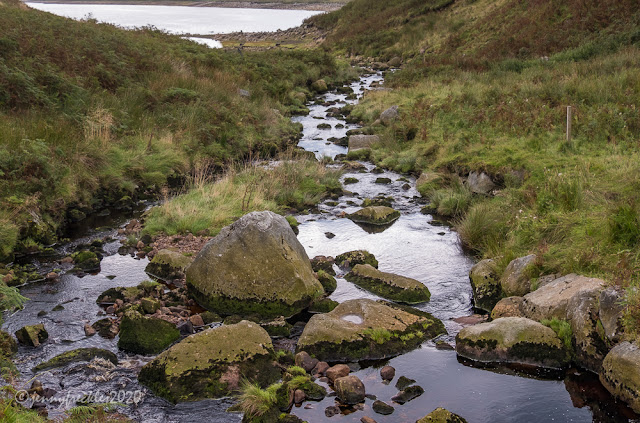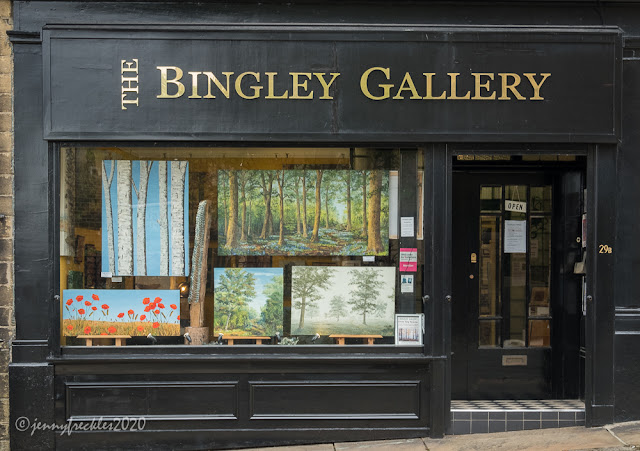So many of the amenities that we enjoy today came to us thanks to the vision of public-spirited Victorians. Often they were the gentry and mill owners, motivated by paternalistic care for their workers. In the case of Bingley's
Prince of Wales Park, it was the combined funds of millworkers themselves and their own hard labour that transformed a steep hillside on the edge of town from rough moorland littered with quarries and underground streams into a verdant green space to be enjoyed by all. Opened in 1865, it was a much needed breath of fresh air, away from the dirty, smoke-filled valley bottom where most of them lived and worked.
Thanks to many years of minimal local authority funding, these days the park seems rather overgrown and a bit neglected. (I suppose anywhere with a lot of foliage isn't at its best in late summer, when the greens darken and the thick canopy cuts out a lot of light. These pictures were taken a couple of weeks ago.) There is now an active Friends Group striving to improve the amenities, though it will, of course, take time. They have recently improved a patio area to provide a space for picnic tables. I'm sure there is colourful planting at some times of the year - there are spring bulbs, and an azalea walk - but not much seemed to be in bloom when I visited apart from some blue hydrangeas and a few orange crocosmia bordering the paths.
There are seats scattered throughout the park, some of them rather elegant, though sadly very dirty. This one is sited next to one of the natural springs that surface in the park and provide little water features.
The steep site is criss-crossed by paths, ranging from narrow tracks to wide promenades. Higher up is an area of open heathland. It seemed to me that if the tree and shrub canopy was thinned out a bit, it might provide more light for smaller plants to grow as well as the possibility of some panoramic views across the valley. Trees planted in Victorian times are now huge, of course, and so places look very different from how they were initially imagined.
Some of the original buildings and structures in the park have been left to decay and be vandalised, and the historic buttermarket and market cross, at one time relocated to the park, were moved back into the centre of Bingley some years ago. There is still an impressive park-keeper's lodge at the main entrance, though the original iron gates have disappeared, leaving only the massive gateposts.
Other rather quirky features include a drinking water fountain (no longer functioning), donated by the Total Abstainers of Bingley in 1866.
The park is quite pleasant even now but has so much more potential. It is such a shame that there rarely seem to be any public funds made available for community projects like this. I guess the pandemic-fuelled recession now makes any such funding something we will never realistically see. We'll have to depend on the various Lottery funds, as they do seem to do some good in some directions.


















































